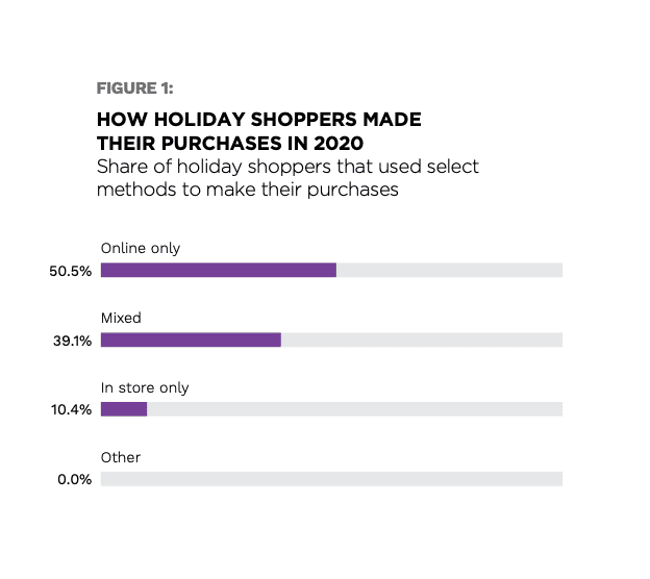
While early to mid-January is always the return season, this year has long been forecast to be a spot more active than its predecessors given the volume of gifts bought online during the 2020 holiday rush.
And as that tidal wave crashes down, retailers are responding in a perhaps unexpected way. The likes of Walmart, Amazon and Target are issuing refunds and telling consumers they can just keep the items, instead of going through the trouble of shipping them back. The idea, which uses artificial intelligence (AI), is supposed to cut down on work and costs for the companies, which have seen an unprecedented surge in activity because of the pandemic.
The option, according to a Walmart spokesperson, generally extends to items deemed difficult to resell — through a consumer’s purchase history and the cost of processing the return also plays into the calculation.
It’s an extreme solution but one the unique conditions of 2020 have created. The good news, for firms not quite as large as Walmart, Target or Amazon, is that there are, according to PYMNTS Online Ordering’s Return Round Trip report, other ways to at least moderate the returns rush.
Everyone Makes Mistakes — Why Returns Surged
Online shopping was the big difference between 2020 and every year that came before it, as the pandemic left consumers particularly leery of crowded physical stores. According to PYMNTS data, more than half (51 percent of consumers) made their purchases without ever setting foot in a store, while 89 percent reported buying at least one gift online.

And with online ordering come the types of mistakes consumers can only really encounter when they actually open the box and inspect their goods. Mistakes lead the field when it comes to generating returns. Fifty-six percent of consumers report them as the prime reason an item was sent back, while the second most common reason for returns was low product quality at 30 percent.
And the third and fourth reasons consumers return — consumers changed their minds or the item arrived too late — are also more likely to appear in a digital shopping context reliant on items showing up in the right place and on time. Twenty-two percent and 21 percent of all holiday shoppers who would be willing to return their purchases cite these reasons, respectively.
The good news is that while elevated online shopping does generate more returns by nature, the report also demonstrates ways merchants can move around that issue.
Slowing Returns With The Magic Of Discounting
Returns for a retailer are a costly headache of reverse logistics. It is why Walmart, Amazon and Target are in many cases determining that taking the return would probably be more costly than just issuing the refund and letting the consumer keep the item. But, as the data demonstrates, the 100 percent discount they are offering on some goods is probably a lot more than they need to be offering.
Because as it turns out, in some cases it only takes a discount of 5 percent to persuade 39 percent of shoppers to keep unwanted holiday purchases. A 10 percent discount increases that share to 45 percent. And bigger discounts don’t necessarily mean bigger results. Fifty-one percent of consumers would keep unwanted items if offered a 20 percent discount and 59 percent would be willing to keep them if offered a 30 percent discount.
The math gets a bit more involved when it comes to why the consumer is returning an object. Consumers who received items late are more willing to keep purchases when offered discounts than those who received an item that was the wrong color, the wrong size or deemed low quality. A 5 percent discount is enough to motivate 51 percent of customers to keep items that were delivered late. But retailers would have to offer discounts of 30 percent to keep 51 percent of customers from returning products involving order mistakes. A 30 percent discount would also convince 60 percent of customers to keep low-quality items.
But no matter the reason, merchants can always keep 50 percent of the sale, and not have to take on the irritation of managing a returns process simply by extending the appropriate discount.
Moreover, the data demonstrates that 64 percent of consumers would consider shopping with merchants that offer discounts on late deliveries. The offer is particularly appealing to younger consumers as 72 percent of millennials and 74 of bridge millennials would consider shopping with merchants who offer such discounts. This compares to 66 percent of Gen X and 54 percent of baby boomer consumers’ preferences.
Returns are going to happen, and if consumers’ newly digitized shopping habits prove to be as sticky as forecast, that may mean a future where more mistakes are made and returns become an increasingly frequent part of the retail journey. But the data show creative retailers have ways to head them off — without offering a 100 percent discount on items.